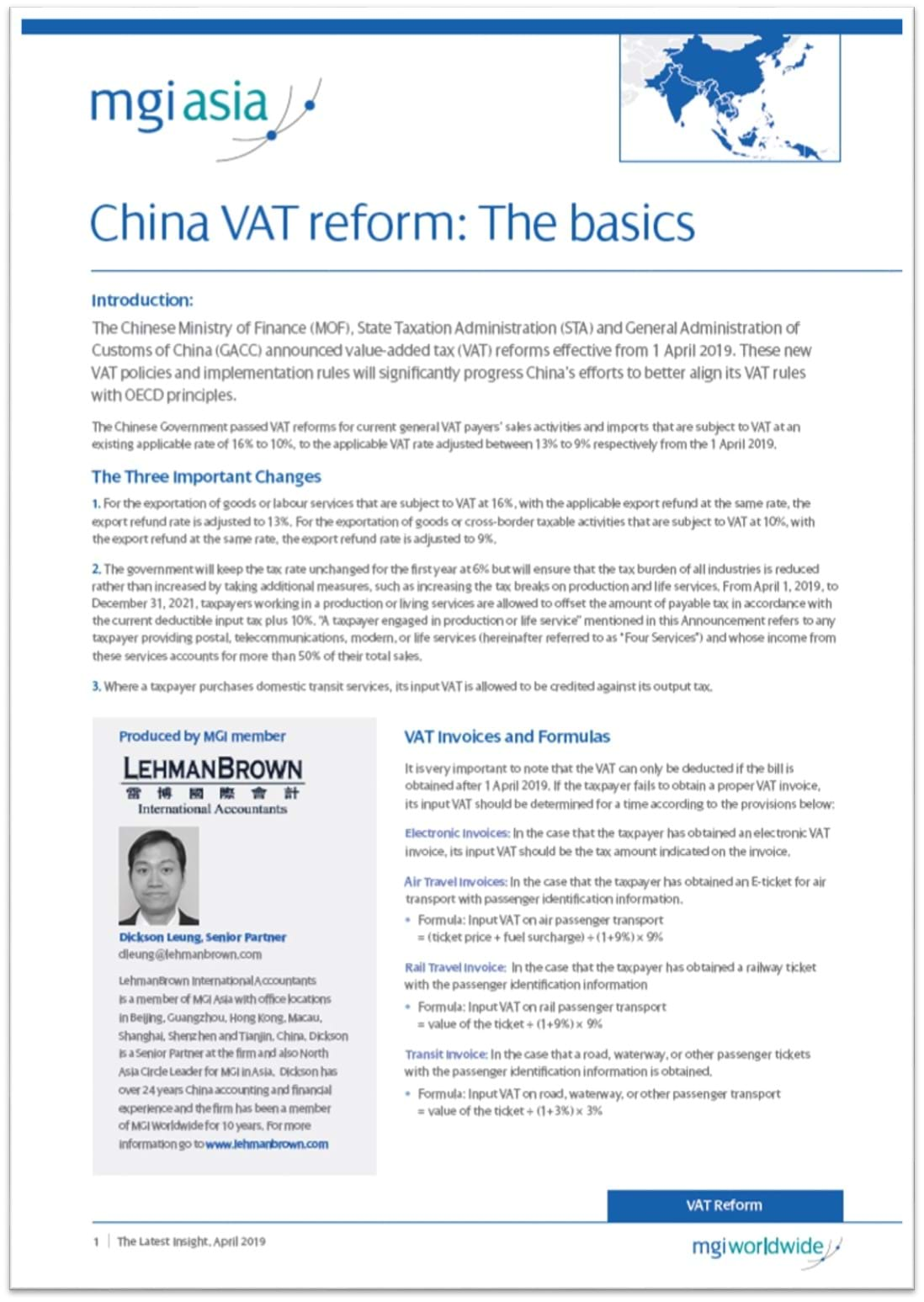China VAT reforms summarised in new whitepaper by MGI Worldwide accounting association member firm LehmanBrown
LehmanBrown, China-based member firm within the MGI Worldwide global accounting network, has published a white paper explaining the recently announced value-added tax (VAT) reforms effective from 1 April 2019.
These new VAT policies set out by Chinese Ministry of Finance (MOF), State Taxation Administration (STA) and General Administration of Customs of China (GACC) will significantly progress China’s efforts to better align its VAT rules with OECD principles.
The Chinese Government passed VAT reforms for general VAT payers’ sales activities and imports that are currently subject to VAT at an existing applicable rate of 16% to 10%, to the applicable VAT rate adjusted to between 13% to 9% respectively from 1 April 2019.


The Three Important Changes
1. For the exportation of goods or labour services that are subject to VAT at 16%, w
 ith the applicable export refund at the same rate, the export refund rate is adjusted to 13%. For the exportation of goods or cross-border taxable activities that are subject to VAT at 10%, with the export refund at the same rate, the export refund rate is adjusted to 9%.
ith the applicable export refund at the same rate, the export refund rate is adjusted to 13%. For the exportation of goods or cross-border taxable activities that are subject to VAT at 10%, with the export refund at the same rate, the export refund rate is adjusted to 9%.
2. The government will keep the tax rate unchanged for the first year at 6% but will ensure that the tax burden of all industries is reduced rather than increased by taking additional measures, such as increasing the tax breaks on production and life services. From April 1, 2019, to December 31, 2021, taxpayers working in a production or living services are allowed to offset the amount of payable tax in accordance with the current deductible input tax plus 10%. “A taxpayer engaged in production or life service” mentioned in this Announcement refers to any taxpayer providing postal, telecommunications, modern, or life services (hereinafter referred to as “Four Services”) and whose income from these services accounts for more than 50% of their total sales.
3. Where a taxpayer purchases domestic transit services, its input VAT is allowed to be credited against its output tax.
Conclusion
These measures are all positive for businesses operating in China, since they will reduce the overall tax burden and represent a significant step by the government to enhance economic activity in certain sectors, but keep in mind that the above is a brief introduction to the full VAT reform.
View the complete "China VAT reform: The Basics" white paper HERE:
If you have any questions, please contact MGI Worldwide member Dickson Leung at [email protected].
For further details please visit LehmanBrown International Accountants' member profile page HERE or visit their website HERE.
MGI Asia is part of MGI Worldwide, a top 20 ranked international accounting network with some 5,200 independent auditors, accountants and tax experts in over 260 locations around the world.
